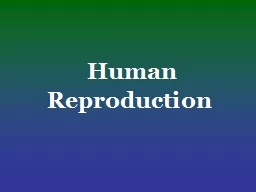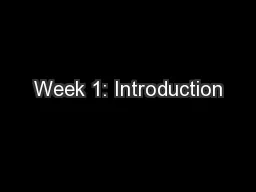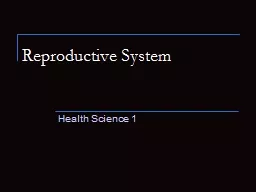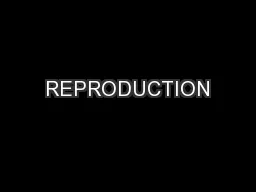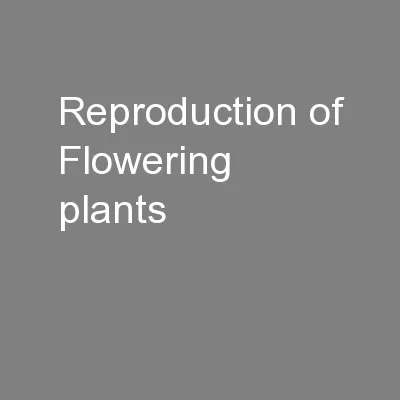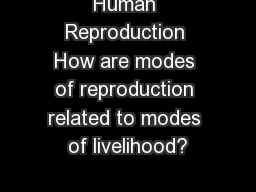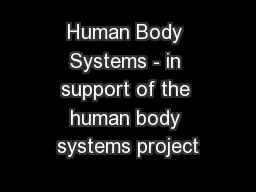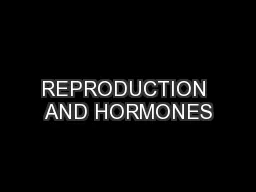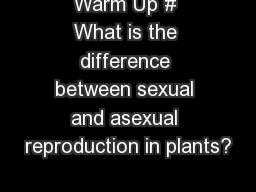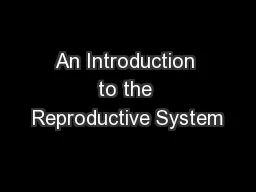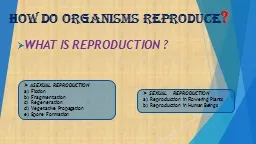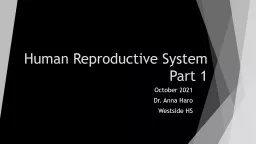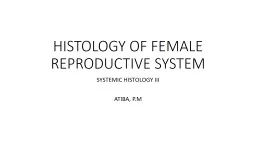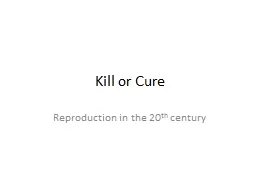PPT-Human Reproduction Reproductive System
Author : lydia | Published Date : 2022-06-07
The function of the reproduction system is to make new members of the species Individual can lead a healthy life without reproducing BUT Reproduction is single
Presentation Embed Code
Download Presentation
Download Presentation The PPT/PDF document "Human Reproduction Reproductive System" is the property of its rightful owner. Permission is granted to download and print the materials on this website for personal, non-commercial use only, and to display it on your personal computer provided you do not modify the materials and that you retain all copyright notices contained in the materials. By downloading content from our website, you accept the terms of this agreement.
Human Reproduction Reproductive System: Transcript
Download Rules Of Document
"Human Reproduction Reproductive System"The content belongs to its owner. You may download and print it for personal use, without modification, and keep all copyright notices. By downloading, you agree to these terms.
Related Documents

